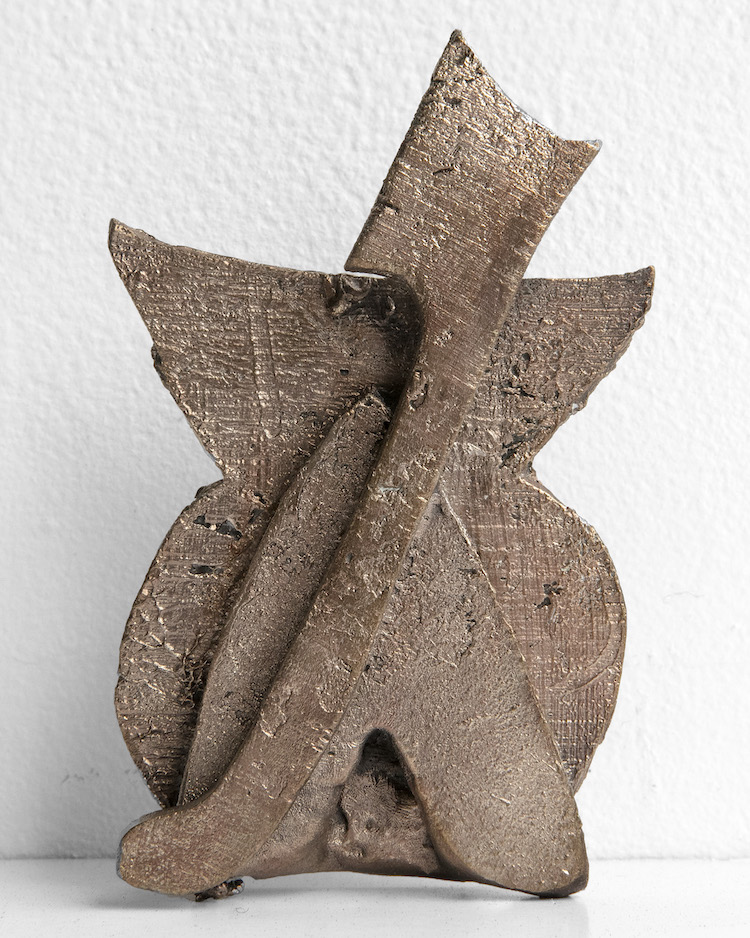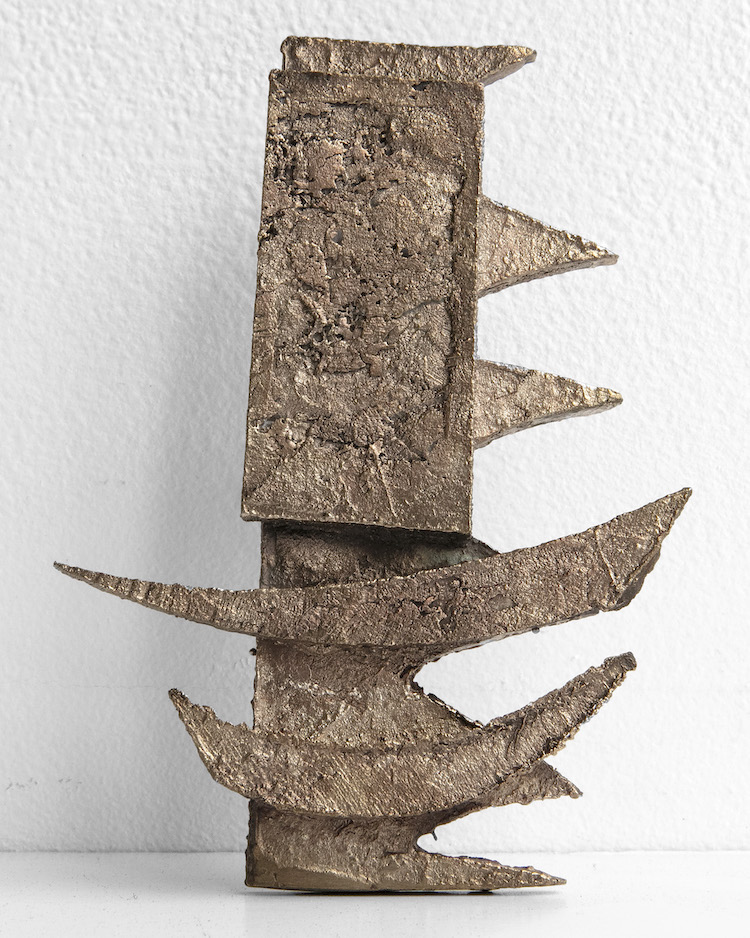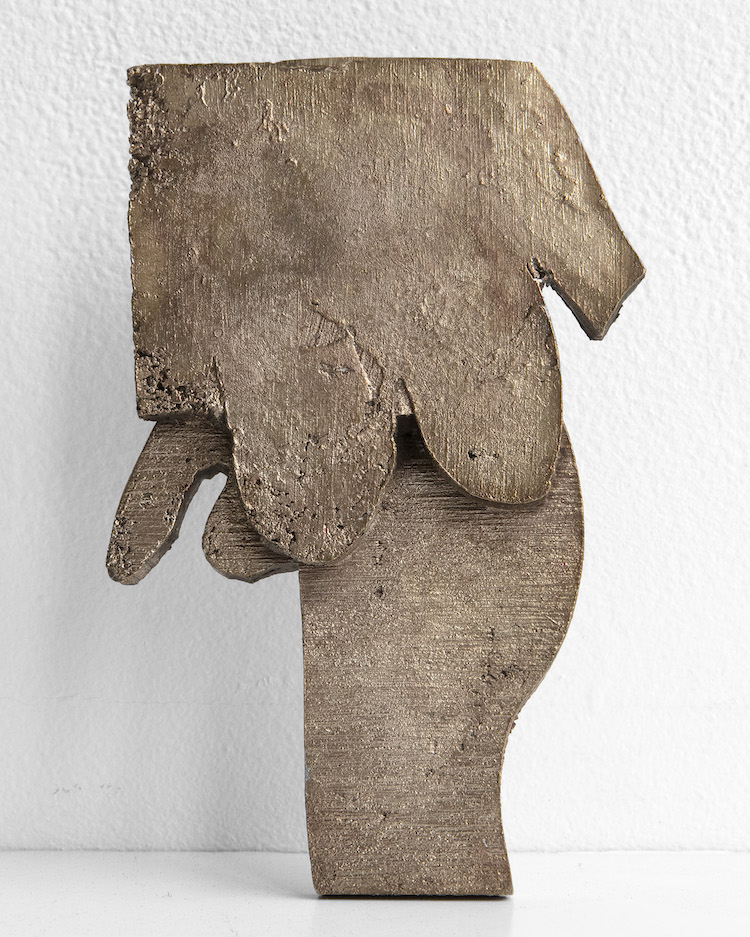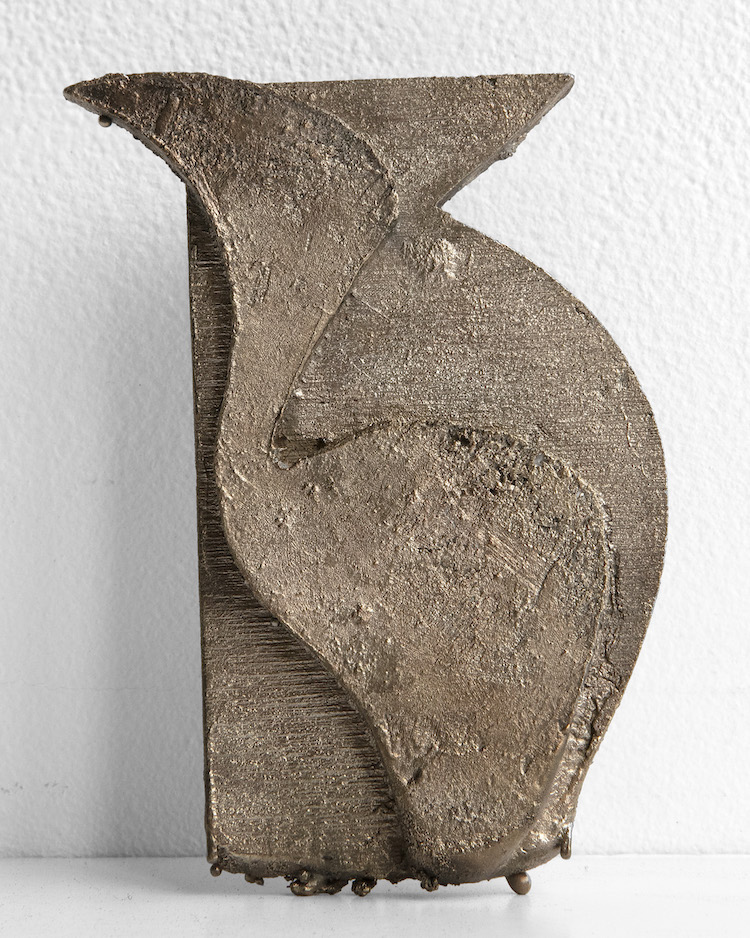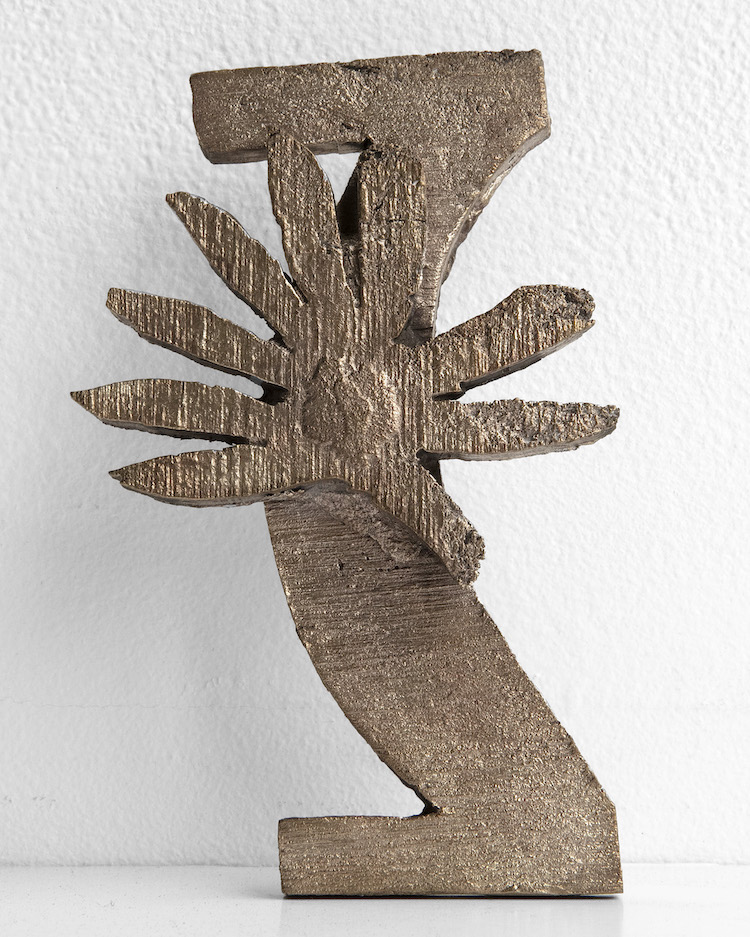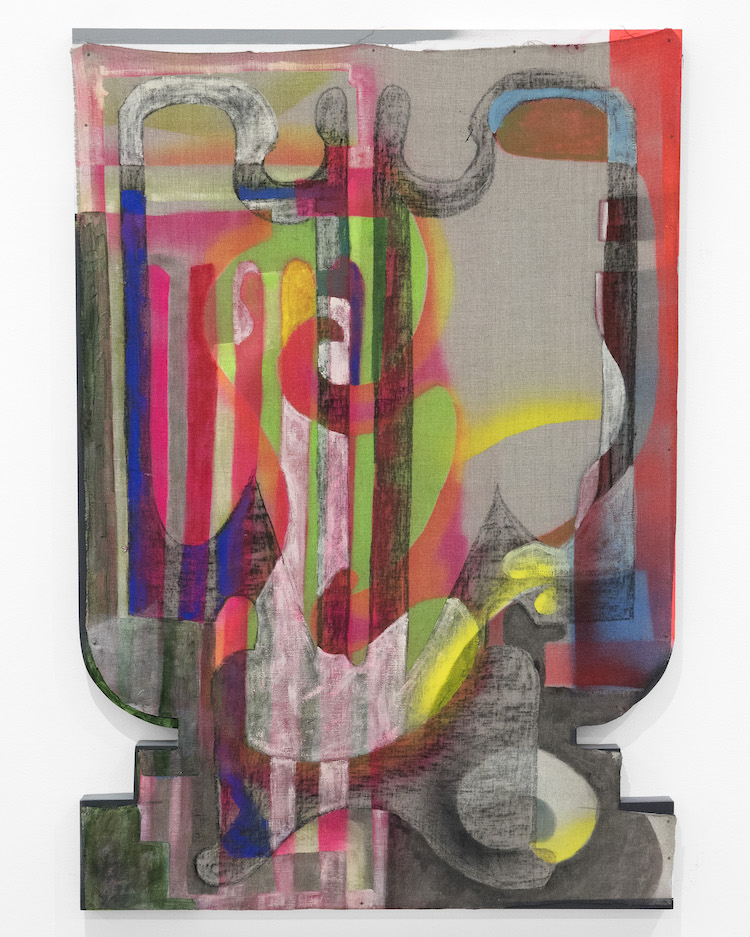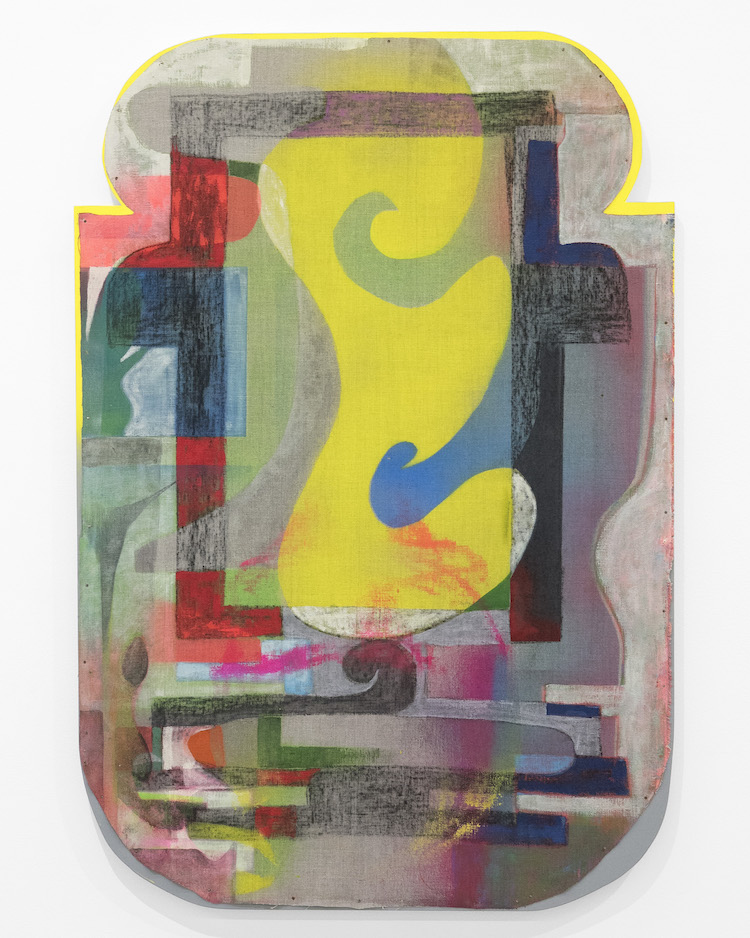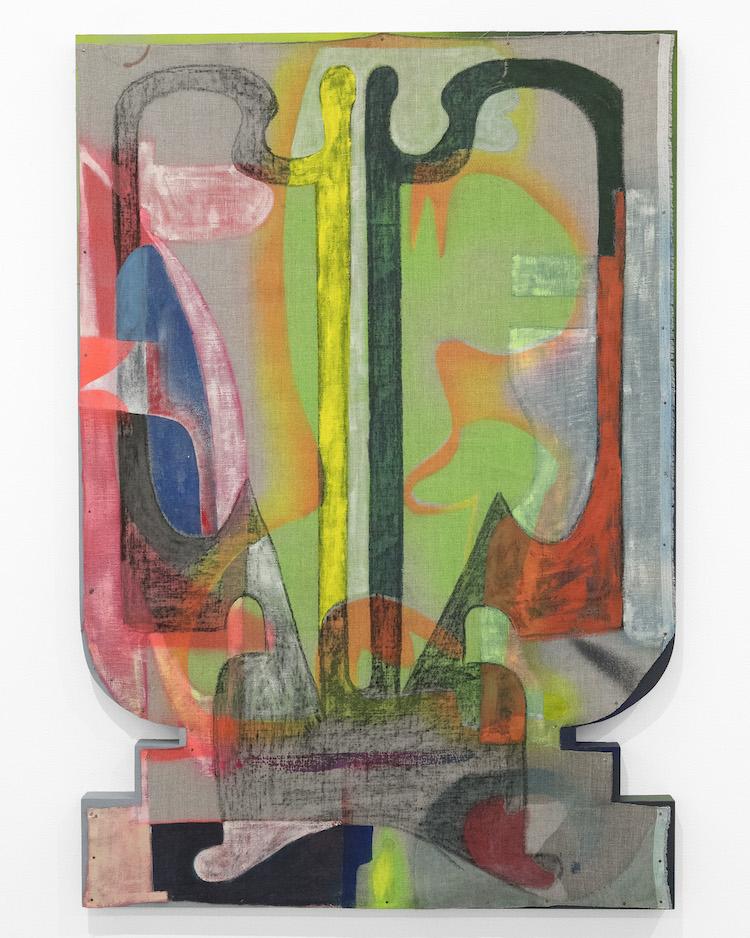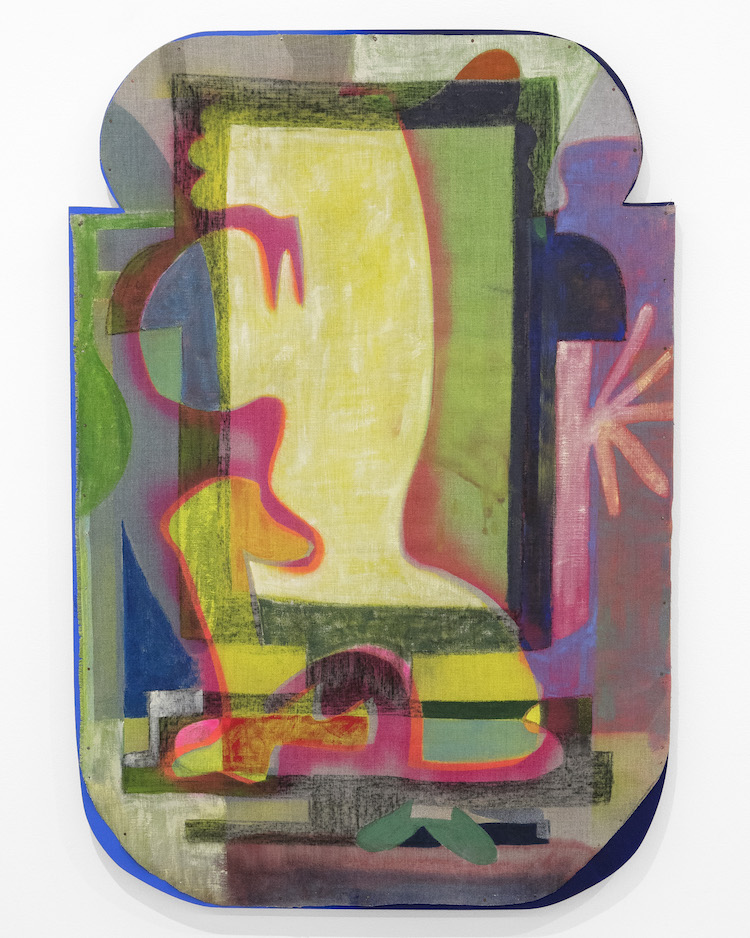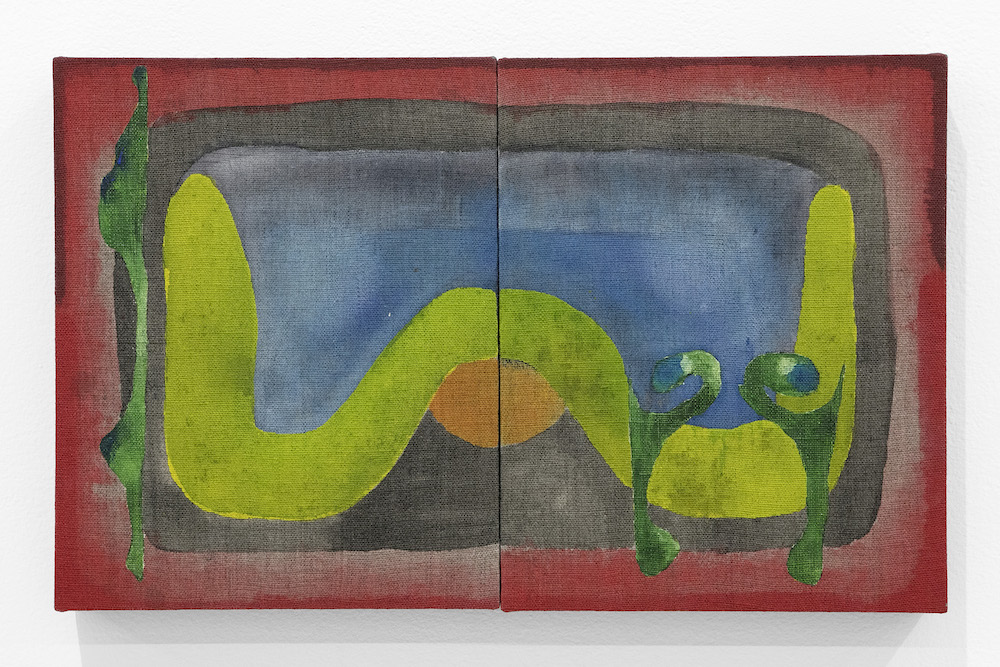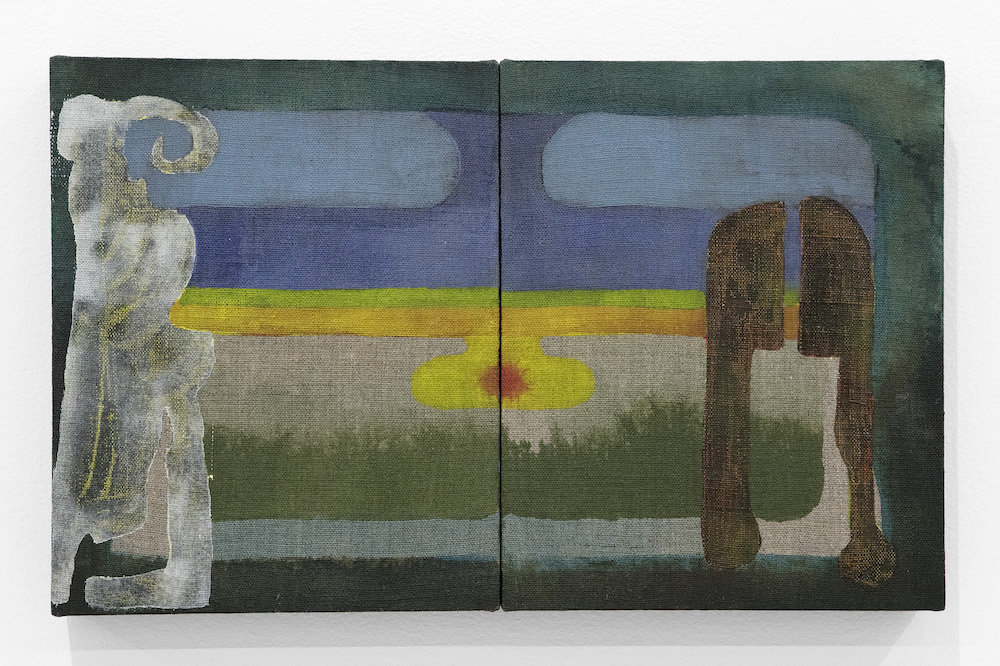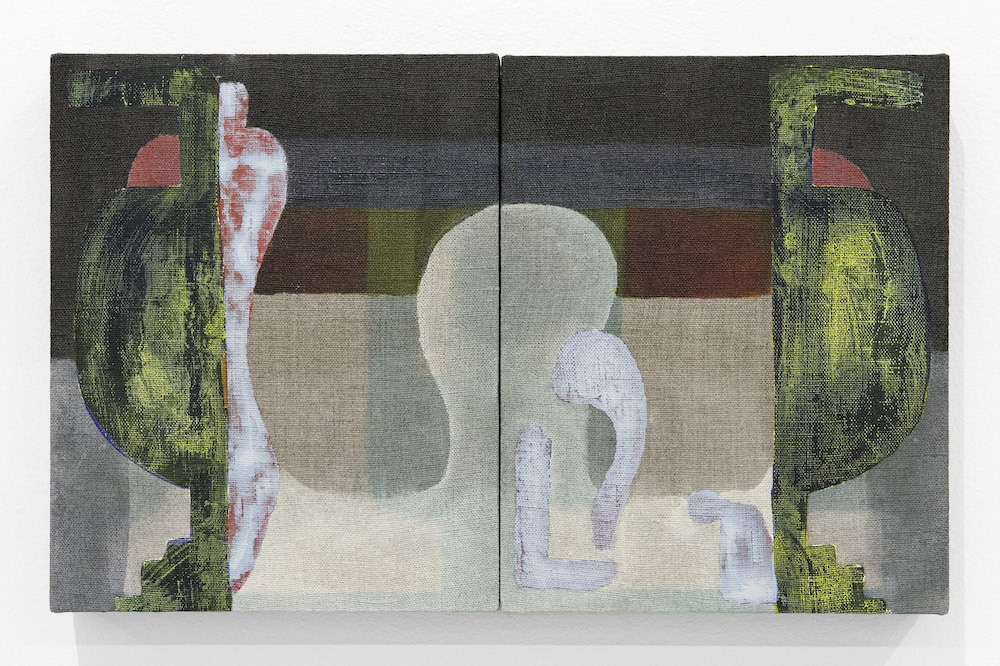pt.2 gallery is pleased to present “what part of the whale”, Tyler Cross’s first solo exhibition, the show consists of four large paintings on shaped panels, four small diptychs, and five small bronze wall sculptures. The genesis of this body of work can be traced to a whale carcass that washed up on the beach at Point Reyes National Seashore in 2019. Tyler visited the carcass every few months over a two year period.
The four small diptychs made from two 8 x 11 canvases give an expansive and zoomed out experience despite their size. These paradoxical paintings appear to show us grand scenes, possibly landscapes or something colossal, far away and at low resolution. They feel like polaroids capturing some rare event, but we are kept from ever really knowing what.
The bronze wall sculptures, which could fit in your flattened hand were cast from plywood. These wooden forms were previously used as tools in Tyler’s painting process, generally employed as stencils or stamps. In retiring these tools and eulogizing them in bronze they act as artifacts of the painting process. They give the impression of sarcophagi for an older shape-language no longer being spoken.
The four large paintings are comprised of shaped canvases, nailed un-stretched to a wooden panel of the same silhouette. The strong outer form echoes into itself, revealing a charcoal structure, making them reminiscent of X-ray images. The skinned and mounted canvases reveal a painter's hypnogogia, bubbling up to representation but always sliding back into abstraction, they never quite ring a bell for you, never fully lift the veil. This gives them a slightly ominous feel despite the bright, at times nearly neon colors. The canvases appear to be churning, rhythmically oscillating with presence and absence. They show something in the midst, a sensitivity to dynamism and the ability to respond to it. A process seems to be underway, the sigilization of putrefaction in distorted time-lapse. The paintings resistance to explaining themselves brings forth desire, the refusal to give clear information awakens imagination, the irretrievable summons eros. Slowly gazing at these paintings feels like an antidote to staring at too many graphs - too many charts - too many facts - too many memes. There is no data here, no discourse, only experience of the first order, a type of knowing that is becoming increasingly rare.

